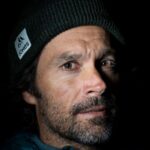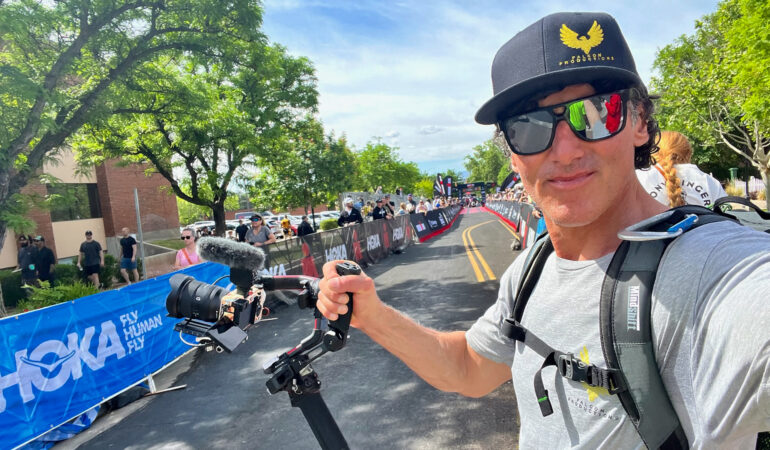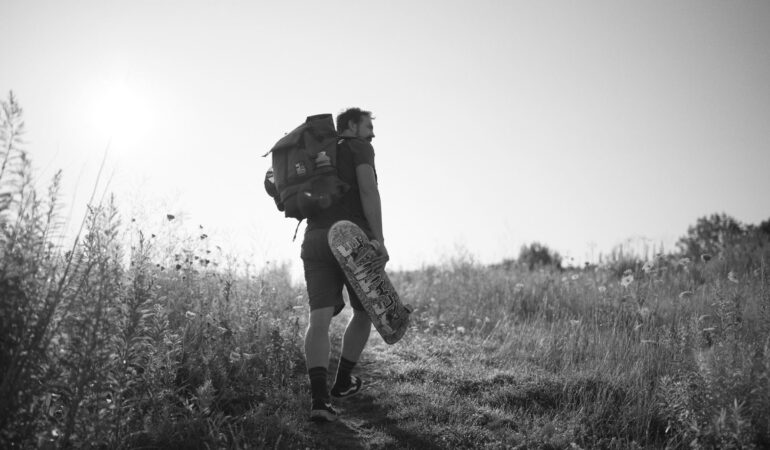Before he even picked up a camera, Ming was my go-to riding partner for years because of his mountain skills, motivation, and up-for-anything attitude. Watching him dive into photo and video projects has been awesome to see. His commitment to the craft, coupled with his ability to get a camera to places few can get to have made him a go-to cameraman for me.
Meet a Creative: Ming Poon
Photographer, Creative Director, Camera Operator, Mountain Guide
Home Base / Tahoe City, California
Activities / Snowboarding, Rock Climbing, Mountain Biking
Why Ming:
In 2015, Ming Poon gave himself two years to make it in his new chosen profession of outdoor photography. It seemed like a long shot—he was self-taught as a photographer and transitioning careers from, of all things, a Hong Kong-based microelectronics business. Yet by December 2017, Ming had scored the extremely prestigious Photo of the Year Award from Powder magazine for an exquisite image of the skier Cody Townsend slashing a right turn through a glowing snowfield in a Tahoe sunset. In short order, he placed images in the New York Times, Outside, Mountain Gazette, Backcountry, and The Snowboarder’s Journal, among a dozen other publications, and logged commercial work for the likes of The North Face, Vail Resorts, Favre Leuba, Patagonia, YETI, Smith Optics, Specialized, and Red Bull.
It’s never been easy making it as a photographer, but Ming had a few advantages. The first was his Vermont childhood as a self-described snowboard punk. “I was a rebel, and if you told me I couldn’t do something, that was fire to me,” he says. “It still is.” The second: he was so skilled in the mountains that when he picked up a camera to shoot his Tahoe riding partners, their images were already in demand—pros like Townsend, Michelle Parker, and Jeremy Jones, who all happened to be his close friends. “It was a symbiotic relationship,” says Ming. “Their sponsors needed photos, and I needed exposure.”
There was also that experience as an international electronics executive. At age 27, Ming was thrust into his family’s company, Weltronics, when his father died. He had to learn the business from the ground up—including learning to speak Mandarin. The work ethic and adaptability he developed came in handy with adventure photography. “I was terrible at first, but I just kept shooting,” says Ming. With relentless work, his learning curve was steep, and he learned how to manage the variables that compose excellent photographs—picking the right locations at the right time in order to get the right light, and using the right equipment and the right athletes. “To create a vision for an image and to execute it is one of the best feelings I know,” he says.
Specialized Skills:
Few creatives can boast business chops on par with Ming’s. As Weltronics’ GM, he was managing 30 people in four offices across northern China. To say the process was challenging is a massive understatement. “The first two years were super tough—I probably cost the company millions of dollars with my mistakes,” says Ming. “But when you learn from failure”, he says, “the experience will eventually yield far more than the short-term financial losses.”
Ming applied that same approach to his start in photography. “Failure is just part of the process,” says Ming. “It’s remarkable how much unpaid work you have to do to get to the work where you do get paid.”
In founding his commercial media production company and photo agency, Wuya Creative, he uses many of the same skills he did as a Weltronics executive, from sales to budgeting to managing relationships with clients. “I got really good at juggling different tasks, and that’s been surprisingly valuable running a small business,” he says.
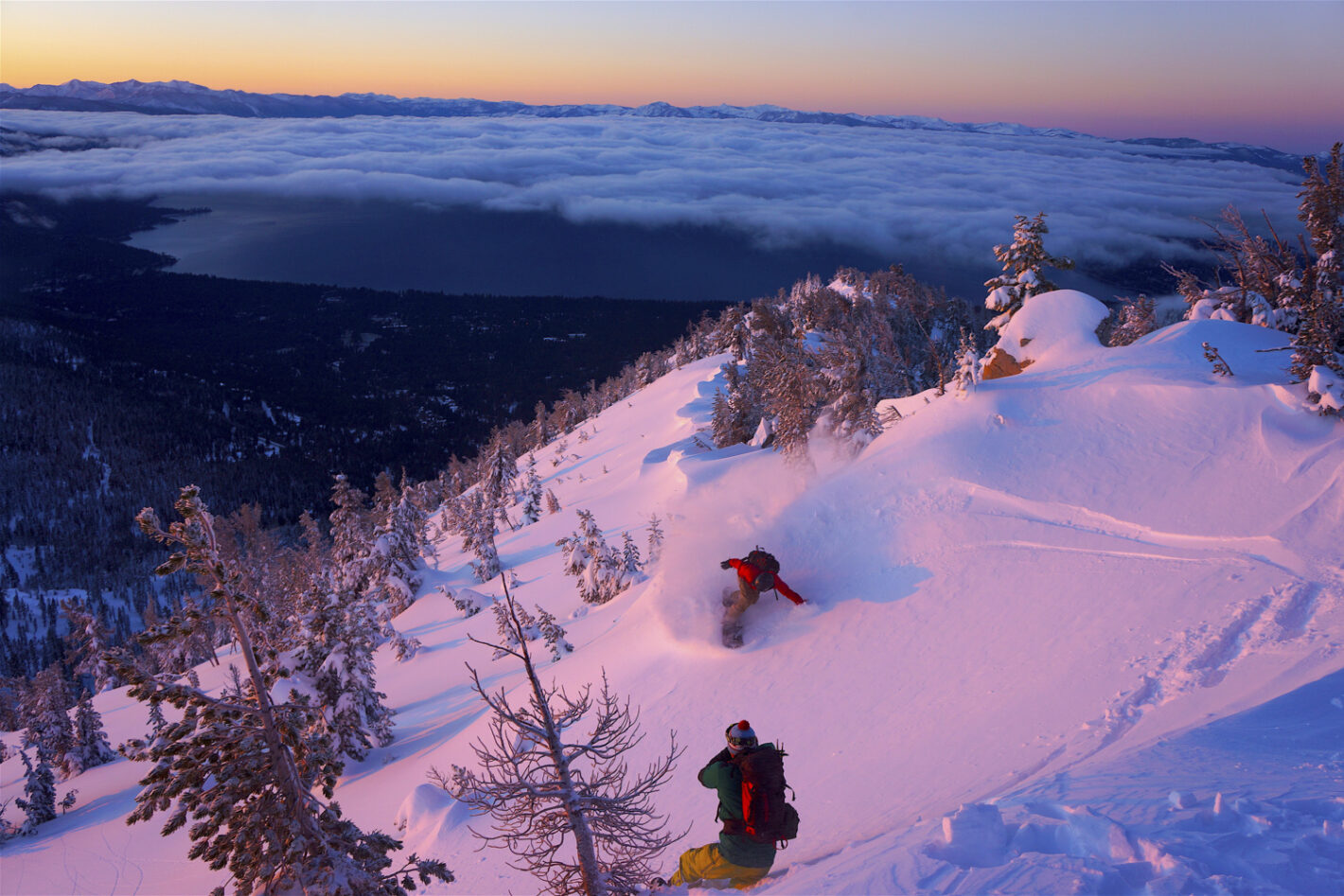

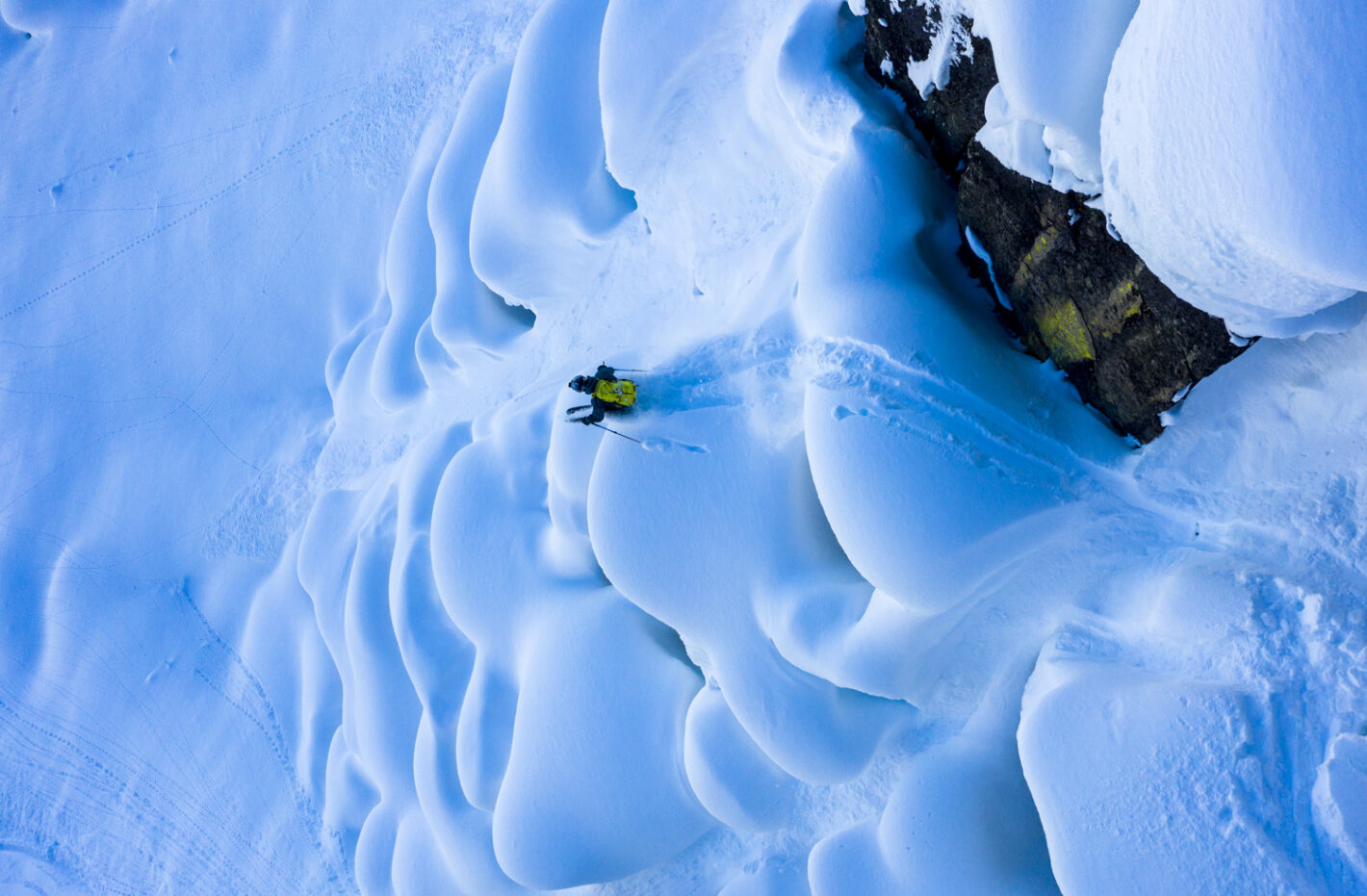
What's Next:
In 2023, Ming was invited to visit the Arctic National Wildlife Refuge by his friend Brennan Laggasse who in turn had received invitations from Gwich’in elder Sarah James and Inupiat elder Robert Thompson. Brennan has continued his work in ANWR because of Sarah and Robert, who have dedicated their lives to protecting what the Gwich’in call “the sacred place where life begins.” Ming considers himself fortunate to document these people, their home, and the University of Nevada Reno students and alumni Brennan recruits. This summer Ming will return to Arctic Village (Gwich’in territory) and Kaktovik (Inupiat territory) and ANWR to document climate change, social justice, indigenous rights, conservation, biology, ornithology, and botany. What Ming says has become “his most meaningful work,” resulted in a show at the Denver Art Museum. “I want my legacy to be working to protect for my kids the sorts of places that shaped who I am,” he says.




